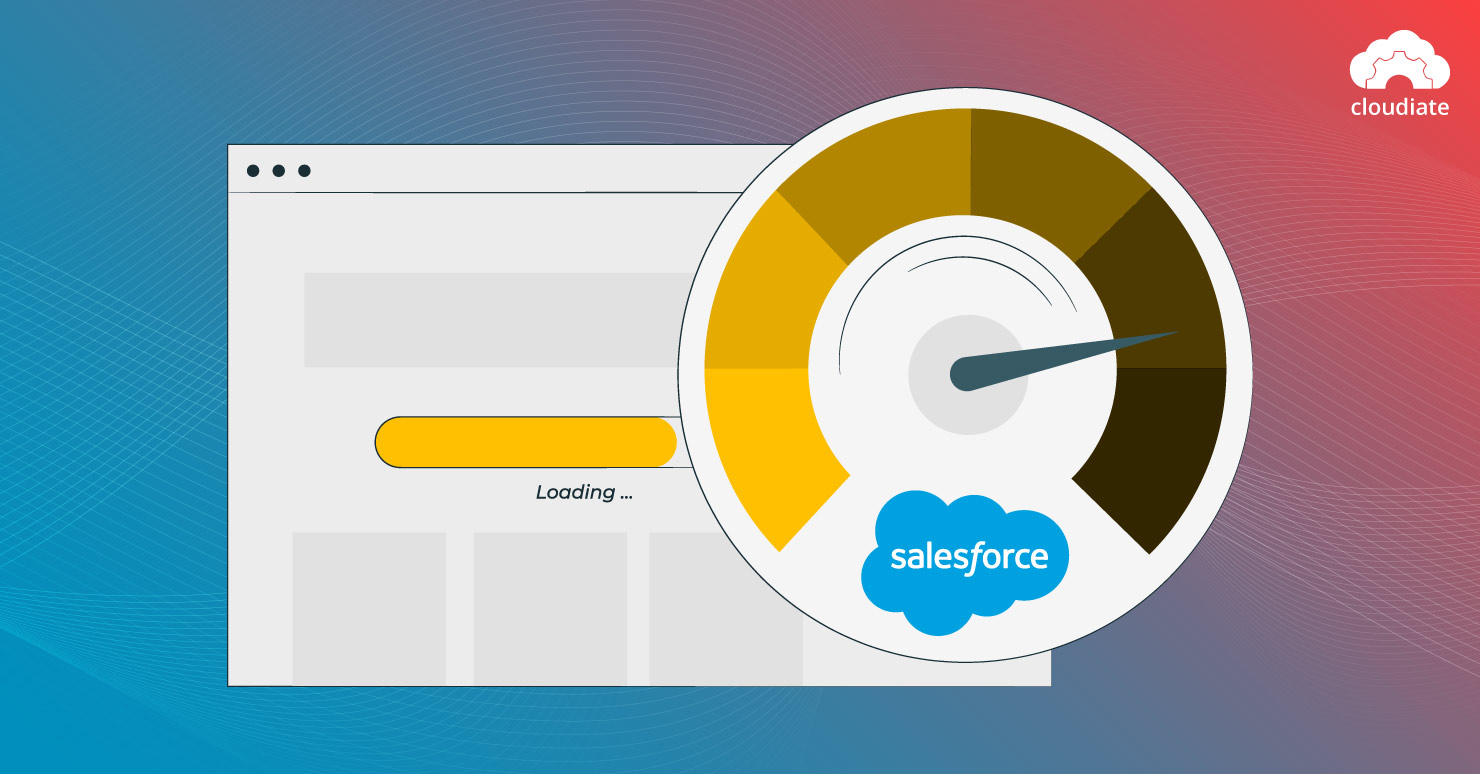Once a company starts relying on Salesforce, the CRM becomes the linchpin of its operations. It keeps the workflow smooth and reliable. So, it doesn’t take a leap of imagination to understand what happens when Salesforce’s performance suffers. The productivity and efficiency of the business suffers.
For instance, when the platform is not implemented correctly to handle large volumes of data and processes, page load times become snail-slow. The sluggish pace is not just frustrating to the user. It also hampers productivity by adding friction. There is a worse scenario: if crucial files are lost or not saved, work comes to a standstill.
In a nutshell, the consequences of poor Salesforce performance are serious. With that as a backdrop, we discover how to optimize the CRM and make the most of it in the coming year.
2 Tips to Speed Up Salesforce Performance

The very first step to enhancing the performance of Salesforce is to reduce technical debt. What is technical debt? It is the “ongoing cost of expedient decisions made when implementing code,“ according to Salesforce. In other words, it’s the workarounds people use to get the immediate benefit without thinking about the impact in the long term. Some examples of technical debt your Salesforce org may incur are:
- Numerous email templates for the same communication.
- Shortcuts that were useful at some point but are now old and redundant because Salesforce started offering a direct solution for it.
- Inactive workflows, unused packages, and half-built validation rules.
- Workflow or process builders that were meant to support old, deprecated processes.
- Fields that are left untouched because they were built for a process that is not used anymore.
There are plenty of ways to cull technical debt, but the best is to know the platform. Because Salesforce is huge and is constantly updated, most users rarely know that there could be a better option to their current workflow. So, to make sure you don’t take on technical debt, partner with people who understand Salesforce inside-out and learn what can be done and what should be done.
1. Use and Implement Data Wisely
In most organizations, users accumulate dozens, if not hundreds, of records every day, depending on their work. Essentially, businesses swim in a sea of data, which can cause a lag in the response time of Salesforce. So, that’s the next step to optimizing performance after removing technical debt.
How do you ensure that a large amount of data doesn’t impact Salesforce for the worse? One is to make sure the CRM is implemented accurately and customized or configured to your needs. Another is to enable page navigation so that the solution glides through the data. Also, make sure it delivers data in packs or asynchronously.
2. Rank and Order Resources
A very basic yet fundamental step is to prioritize the devices eating up bandwidth. In the current scenario, the load on wireless networks is massive, with multiple gadgets connected to them. As a result, capacity limits are reached faster, which leaves tools like Salesforce starved of enough juice to function. So, if your teams are working from one location, analyze the traffic and make sure Salesforce is prioritized for each resource.
3 More Insights to Improve Salesforce Performance in the New Year

There are two broad ways to speed up the performance of Salesforce. The first makes changes within the CRM and includes the steps discussed above. The second is about altering processes beyond it and includes insights that the business can put into practice as a whole.
1. Make Salesforce Part of Every Team
The original purpose of Salesforce was to collect and disseminate customer data, which is why it’s called a customer relationship management solution. However, to truly optimize the functioning of the solution, it must be utilized by every team, from service to marketing to finance to sales. The reason is that the insights and analytics the solution offers are useful for more than one team.
“When all teams use CRM, they are 16% more likely to feel that it supports the full customer life cycle.” For the same reason, Salesforce expects 81% of users to expand the CRM system “beyond sales and service/support over the next three to five years.”
2. Make it a Single Source of Truth
Data silos are part and parcel of every business, particularly if different teams or departments rely on different apps and tools to get the job done. Consequently, data is never at a central location. And because it comes from too many sources, making sense of it is not easy. That impacts not just the customer experience but also the speed with which a service is provided.
Therefore, the next insight to optimizing Salesforce performance is to overcome data silos by using CRM as a centralized solution. It also means migrating data from legacy solutions and making it more accessible.
3. Keep up with Salesforce Updates
Salesforce has three seasons of updates, and they are released like clockwork. As a user, you should be aware of when these updates are pushed and what they are. Why? Because they can sometimes affect existing configurations. Similarly, any new plugin and functionality integration can have repercussions on performance.
The wrap up on optimizing performance
With remote work still being crucial, the digital initiatives of a company will continue to play a pivotal role in 2022. It would make tools like Salesforce that enable teams to increase their productivity even more imperative than before. And conquering a CRM means perfecting its performance because a slow system is the biggest drain on a business’s resources.
Given the depth of functionality that Salesforce caters to, optimizing performance is an uphill task. You can use the insights shared above to address the issue, but a simpler path is to find a reliable Salesforce partner.
At Cloudiate, we can guide you through the process of making the most of Salesforce in 2022 and enhance your customers’ experience. To find out more, get in touch!

